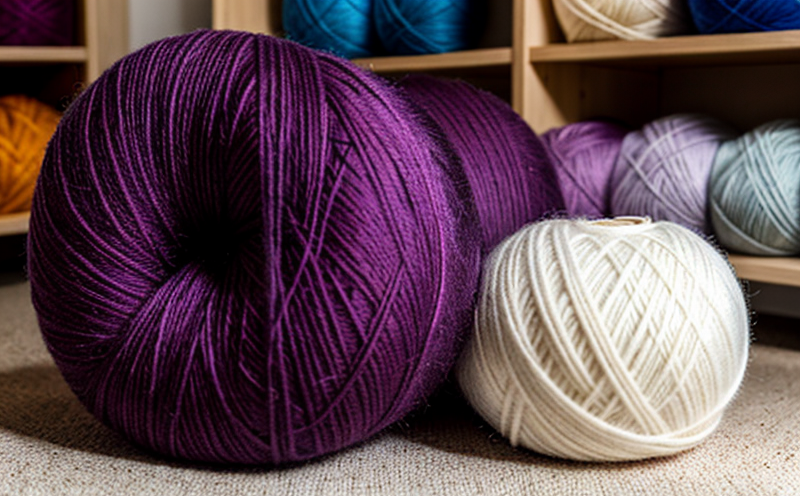ISO 16549 Yarn Evenness and Hairiness Testing by Uster Tester
The ISO 16549 standard is a cornerstone in the textile industry, providing a precise method for measuring the evenness and hairiness of yarn. This test is essential for quality control, ensuring that textiles meet specified standards of consistency and appearance.
Evenness refers to how evenly fibers are distributed within a strand of yarn. Hairiness, on the other hand, describes the length and density of protruding fibers. Both attributes significantly influence the final product's performance, durability, and aesthetic appeal. The Uster Tester provides an accurate measurement by subjecting samples to controlled conditions that simulate real-world manufacturing processes.
For quality managers, compliance officers, R&D engineers, and procurement specialists, understanding these parameters is critical for maintaining high standards of production and ensuring customer satisfaction. This service not only helps in meeting regulatory requirements but also aids in optimizing the yarn manufacturing process to enhance product quality.
The Uster Tester uses advanced optical technology to measure evenness by analyzing light diffraction across the yarn surface. Hairiness is determined by measuring the projection of fibers onto a reference plane. The system can generate detailed reports that include statistical data, graphical representations, and pass/fail criteria based on ISO 16549.
Preparing samples for testing involves ensuring they are free from impurities and defects that could skew results. Samples should be cut to standardized lengths and orientations to ensure consistent readings across different batches or production runs. The Uster Tester’s precision allows for the detection of even minor variations in yarn quality, making it an invaluable tool for process optimization.
Compliance with ISO 16549 ensures that textile manufacturers can confidently market their products as meeting international standards. This is particularly important in sectors like fashion and home textiles where uniformity and appearance are paramount. The service provided by the Uster Tester not only aids in regulatory compliance but also enhances product reputation and market competitiveness.
| Applied Standards | Key Features |
|---|---|
| ISO 16549:2017 | Optical measurement of evenness and hairiness. |
| ASTM D3867-18 | Alternative method for measuring evenness. |
The Uster Tester’s capabilities extend beyond mere compliance. It aids in the development of new yarn formulations and processes by providing detailed insights into how changes affect evenness and hairiness metrics. This information is crucial for R&D teams looking to innovate or improve existing products.
Applied Standards
| Standard | Description |
|---|---|
| ISO 16549:2017 | Optical measurement of evenness and hairiness. |
| ASTM D3867-18 | Alternative method for measuring evenness. |
Industry Applications
The ISO 16549 yarn evenness and hairiness testing is widely used across various sectors, including fashion, home textiles, automotive, and industrial fabrics. The data obtained from this test helps manufacturers optimize their production processes to ensure consistency in product quality.
- Fashion and Apparel: Ensures uniformity in fabric construction for seamless garments.
- Home Textiles: Guarantees consistent appearance of beddings, curtains, and upholstery.
- Automotive: Supports the development of durable and aesthetically pleasing seat covers and interior trimmings.
- Industrial Fabrics: Ensures strength and durability in materials used for conveyor belts, roofing membranes, and filtration systems.
Environmental and Sustainability Contributions
The precision of ISO 16549 testing by the Uster Tester helps reduce waste and inefficiencies in textile production. By ensuring that each strand of yarn meets specified evenness and hairiness criteria, manufacturers can minimize the use of raw materials and energy. This leads to a more sustainable production process.
The data generated from these tests also aids in recycling efforts by providing insights into how different types of fibers behave under various conditions. This information is crucial for developing recycling processes that are both efficient and environmentally friendly.





